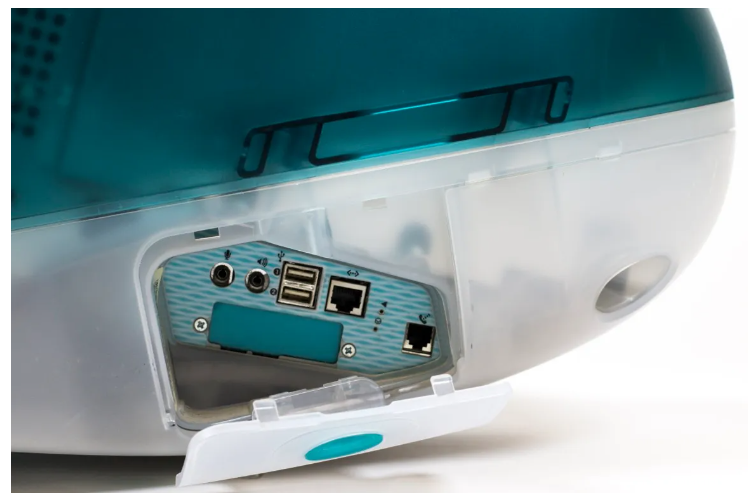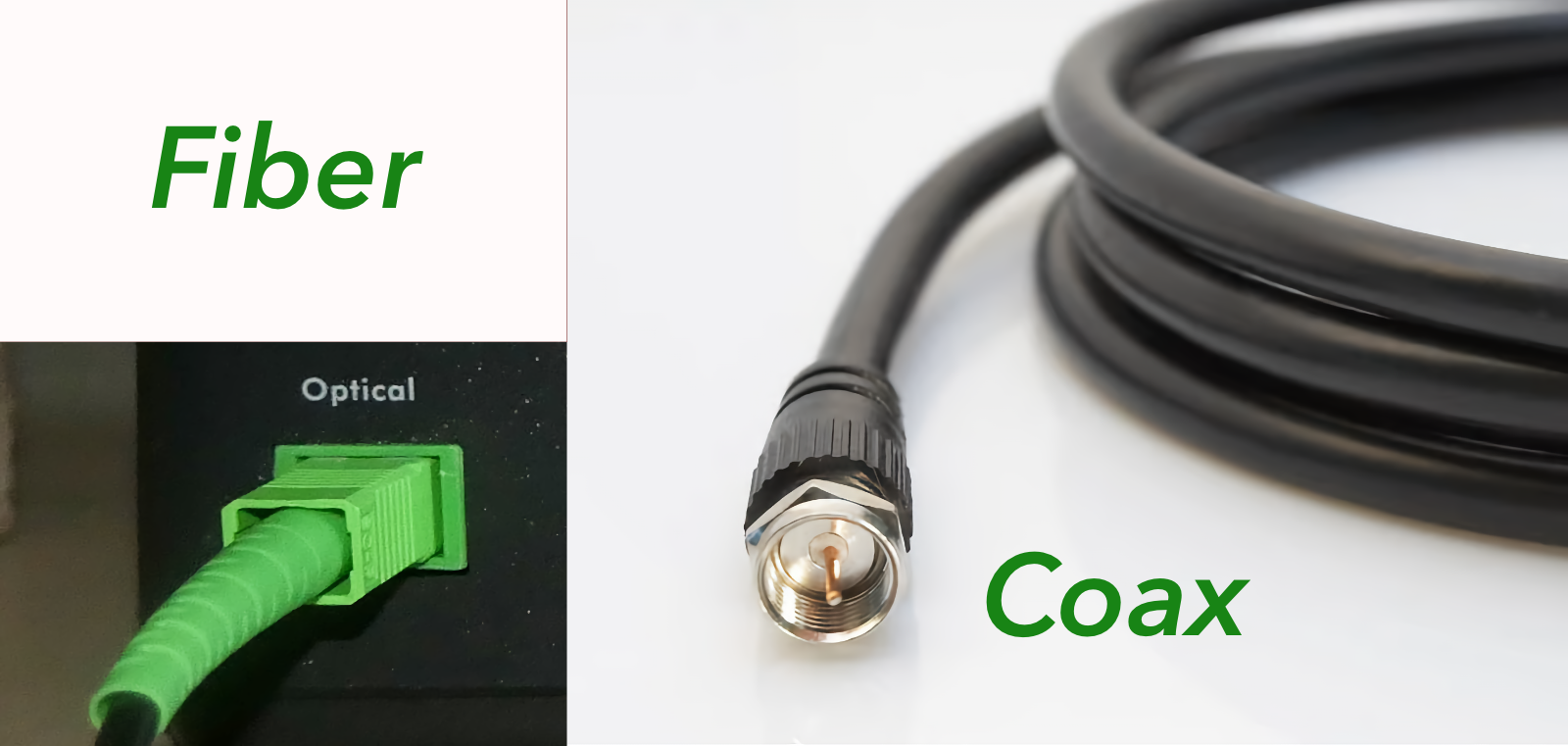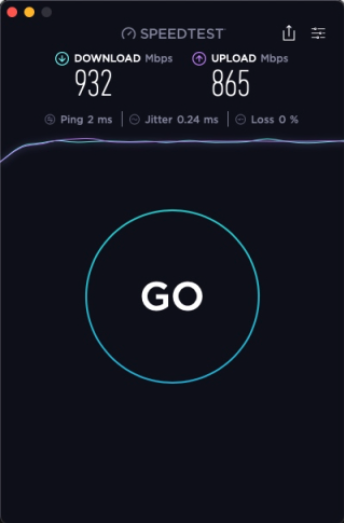Blacksburg, Virginia, 08/15/2022

Things have changed a lot since the original iMac® introduced “simple” Internet connections. Steve Jobs also introduced USB to us in with the iMac 1998. It was a technology developed at Intel and popularized by Apple. USB replaced a myriad of other connections because it was better, faster, more reliable and easier to use.
Today the number of USB devices on my desk surprises even me and I feel like I was there for USB’s birth. USB provides connections for all sorts of devices to Macs, Windows and Linux computers. They all work.
Most of us in 1998 ending up using the modem to get to the Internet and not the Ethernet port. Connecting to the Internet was often not as easy or simple as the marketing brochures promised. Fortunately, technology changes and those changes have made it much easier to connect and stay connected to today’s Internet.
WideOpen Blacksburg offers symmetric fiber Internet connectivity to its customers. Almost everyone living in Blacksburg today has a home Internet connection but not everyone has fiber. Fiber is better, faster, more secure, and easier on users. It is also competitively priced. Fiber, just like USB, will replace less technologically advanced Internet connections over the next ten years or so. If you do not have or understand fiber, maybe you are wondering why our symmetric fiber is such a big deal?
For lots of good reasons, fiber is often called the gold standard for home Internet connections. Technology adoption moves in stages. Most people are familiar with the technology adoption curve. We all know about the innovators and early adopters but just where do fiber to the home users fit in that curve?
We will get that answer but first let’s get some basic understanding of how to evaluate home Internet connections by looking at concepts that are familiar to everyone. When the first Interstate highways were built in the fifties they were a huge technological advance over two lane highways.
The one thing that was quickly discovered about Interstate highways is that the communities that had immediate access prospered. Also businesses and people who quickly figured out how to take advantage of them did exceptionally well. Interstate highways had the capacity to move huge amounts of traffic much more easily than two-lane roads which were often clogged with slow traffic.
Fiber is an even more capable technological advance than Interstate highways. While you have to build more lanes to increase the capacity of Interstate highways, with fiber you increase capacity by changing the electronics at the ends. It would be like putting a bigger entrance and a larger exit on a stretch of highway and magically more lanes appearing in the road between them. Fiber is technologically advanced because it moves information with light.
Fiber is also proven technology. Fiber has been the Internet backbone for decades. TAT-8, a transatlantic fiber optic cable, was built in 1988 and linked the United Kingdom, France and the US. Fiber is also a well-tested commercial technology which has become a cost effective way to deliver Internet connectivity to homes. WideOpen was involved in the design and construction of nDanville, the Danville, Virginia fiber network. Their fiber network by all measures contributed to their economic revitalization. Amazingly, Danville’s fiber network has been in operation since 2008. Since FTTH (fiber to the home) was being offered in 2008 in Danville, we are well past the early adopter phase. In the fall of 2011, Danville became the home of a Cray Super Computer. Their fiber infrastructure played a role in bringing it to town. Since FTTH (fiber to the home) was being offered in 2008, we are well past the early adopter phase.
Fiber is superior technology because it moves information faster. The best way to understand the advantage fiber is to look at the fiber speeds that are already available. Chattanooga, Tennessee’s fiber provider, ECB, deployed 10 Gbps residential connections in 2015. In August 2022, they announced the availability of symmetric 25 Gbps for residences and business. It is unlikely that there are many people who need that much bandwidth today, but it does mean the fiber that we build to your house today will be more than capable of meeting your full connectivity needs now and far in the future.
Looking at the big picture of Internet connectivity from an individual homeowner’s perspective is easy if you have recently gotten a fiber connection like I did. When we moved to Mocksville, North Carolina, eighteen months ago, we evaluated a number of things from the perspective of how will it meet our needs five or even ten years from now? Our Internet connectivity was one of our prime concerns and having been on the Internet since 1993, my understanding of the technology gave me the tools that I needed to make a decision.
I am in my eleventh year working for WideOpen and like my previous years in technology at Apple, it has been as a remote worker with a home office and an Internet connection. It did not take a lot of math to figure out that the coax-cable technology we had been using for years was not improving fast enough to meet my business and personal needs. Beyond work, I take thousands of photographs a year and store some big files from my books in the cloud. I am not unusual in today’s world.
In fact even if you are an average US household, you likely use more data than you think. The data we use is growing rapidly and that growth has shown no real signs of slowing as our economy is reshaped by new pandemic-driven work habits.
“Consumer broadband consumption in North America reached a milestone in the fourth quarter of 2021 as averages hit 536.3 gigabytes (GB) – surpassing half a terabyte (TB) – according to a new study from OpenVault.”
“That figure represents an increase of 165% when compared to the average of 203GB per month OpenVault found in its Q4 2017 study.”
As you read the balance of this article keep in mind that your bandwidth needs are going to grow a lot over the next few years. Your broadband connection should be able to handle that growth.
Almost nine years ago in 2013, when I wrote an article, “ Just How Bad Is Your Internet Connection ,” our cable connection delivered 32.24 Mbps down and 5.49 Mbps up. When we moved in Feb. 2021, we were getting 484 down and 24 Mbps up. While it looks fast (and the download speed is except my network ping reading was at 27 milliseconds- ping is a good measure of the responsiveness or delay in your connection), what it really shows is that our download speed was fifteen times what it had been nine years earlier but our upload speed had NOT even gotten to five times what it was. My needs as a video conference user/content provider were not being met.
It is obvious to heavier users of the “Cloud,” that coax speeds have focused on downloads and not successfully pushed ahead with faster upload speeds that we need. In their defense, the technology to increase upload speeds with coax cable is difficult and sometimes requires a lot of tuning. As is often the case with a technology like coax that is pushing its limits, users’ needs are growing faster in different directions (uploads) than coax cable technology can easily deliver today. The recording industry tried a number of things before iTunes® and similar services driven by new more scalable technology won the day.
As many people learned during the pandemic, upload speeds matter and if you are sharing a connection with people in your own household and your household is also on shared bandwidth with your neighborhood instead of using fiber which provides more individual bandwidth, you can get frustrated. Work does not get completed on time, video conferences don’t go as planned and files, including homework ones might not get where they need to hit those all important deadlines.
The questions we asked ourselves when deciding to jump from one technology to another one were pretty simple. Is the new technology proven technology? Is it better technology? Is it reasonably priced? Will it provide my family with a better experience and will it have the capability to grow with our needs over the years?
I answered all of those questions in the affirmative so I went with fiber. The only thing cable had going for it was a low priced introductory offer but I remember well how the rates rapidly went up at the end of the second year when I signed up the last time.
While I am living in rural Davie County, North Carolina, across the road from a twenty acre soybean field, I have Gig fiber with speed regularly exceeding 900 Mbps up and down. My ping has dropped from 27 ms to 1 or 2 ms so I have a much more responsive connection. I could have chosen any of at least three other technologies. On July 31, our power flickered out for a couple of minutes during a thunderstorm. As the Internet and our WiFi came back up a minute or so later, I was reminded of all the similar times that I had spent staring at cable modem lights for what seemed like ages as I waited for all the signals to sync so the Internet could return.
If you decide to not to go with fiber, remember cable companies are still working to commercialize the technology that will allow them to theoretically compete with the fastest upload speeds that we are offering today to our customers in Blacksburg. Are you willing to wait the years that it will take them to get DOCSIS (Data Over Cable Service Interface Specifications) 4.0 finalized, out of the labs, debugged and deployed in the field? You will also be gambling on the cost that they will eventually charge you.
Fiber is a proven technology, now available at a competitive price. To quote the Electronic Frontier Foundation, “Meanwhile, fiber systems have at least a 10,000 (yes ten…thousand) fold advantage over cable systems in terms of raw bandwidth.” What that means for an individual homeowner is that there is plenty of proven technology already in place to make your fiber connection even better next year and five or ten years down the road.
I mentioned fiber is the “gold standard”of Internet connectivity. With ever more photos and videos being produced in your home along with all the other always-on digital services that are rapidly becoming essential to our lives, why wouldn’t you go for the gold and snatch a great fiber connection with symmetrical upload speeds?
I cannot think of a single reason. There are video solutions out there for streaming that mimic the cable experience. There is someone in our house, my wife, who was convinced that streaming would be impossible to learn. That turned out not to be the case. She now owns our Amazon Fire remote. Remember the first self-serve gas pumps and ATMs? When they came out, we were all surprised that we mastered them without very much angst.
Wherever you are in the broadband world and whatever technology you have, take a close look at local companies providing fiber . It is likely they will be committed to providing great service because they are your neighbors.
iMac® and iTunes® are registered trademarks of Apple Inc.
1. Light Reading- Average data consumption eclipses half a terabyte per month
- David Sobotta, Vice President, WideOpen Networks






